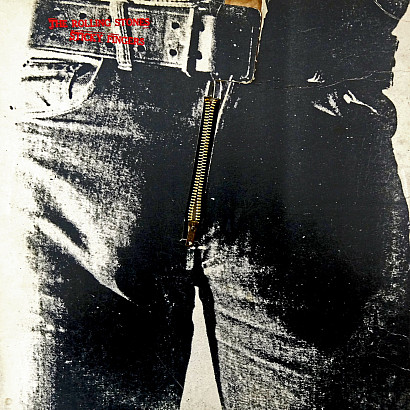Sticky Fingers Zips To #1
The Rolling Stones' Sticky Fingers album, with a working zipper on the cover, hits #1 in the US.
The Rolling Stones' first album of the 1970s is also the first release on their new label: Rolling Stones Records. The album is targeted squarely at the US market, where it outsells every previous Stones album, eventually selling over 3 million copies. After the sacking of founding member Brian Jones, a second guitarist, Mick Taylor, is added to the lineup. Taylor breathes new life into the band, bringing a more contemporary American sound to songs like the bluesy #1 single "Brown Sugar" and the country rocker "Wild Horses" (both songs recorded in Muscle Shoals, Alabama). Thanks to a series of shrewd deals made by the band's former lawyer, Allen Klein (to his benefit rather than theirs), the band were faced with a crippling tax bill, and Decca Records retained the rights to all of their material thus far - with the band owing them one final single to complete their contractual obligations. This led to the band holding back their newer recordings and presenting the company with an unreleasable song called "C--ksucker Blues." Decca responds by reissuing the two-year-old "Street Fighting Man," and the Stones, freed from the constraints of their deal, are able to strike out on their own. With complete artistic control over both the content of the record and its presentation, the band call in the pop artist Andy Warhol to design a cover. Warhol selects an image of a male model clad in tight jeans, with a working belt buckle and zipper that can be opened to reveal a pair of cotton briefs. The zipper itself is found to cause damage to the delicate vinyl, so the distribution companies have to partially unzip each one by hand to protect the part that meets the needle and minimize damage when they are stacked for transportation. The album also features the first use of the band's iconic "tongue and lips" logo, which is designed by a London art student named John Pasche.

No comments:
Post a Comment